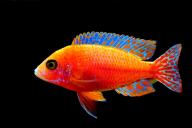Throughout childhood and adolescence, the impact of peer influence on friendships and behaviors is profound.
A recent study conducted by researchers from Florida Atlantic University delves into the nuanced dynamics of peer influence within pairs of friends, revealing a surprising insight: having fewer friends than your partner can heighten your susceptibility to their influence.
Let's find out more!

How it works
This phenomenon arises from the dynamics of compatibility and dissimilarity.
When an individual has fewer friends, the desire for compatibility becomes more pronounced, reducing the likelihood of disagreements that might strain the friendship.
Consequently, this inclination towards conformity leads individuals to align their behaviors and preferences with those of their friends.
An unusual study
The study, centered on a diverse group of middle school sixth graders with mutual friendships in Southern California, produced intriguing findings.
Published in the Journal of Youth and Adolescence, the research highlighted that children with fewer friends were markedly more susceptible to being influenced by peers with a larger social circle.
What's particularly fascinating is that susceptibility to influence wasn't solely linked to the overall number of friends; rather, it hinged on having fewer friends than the partner.
The results
An interesting consequence of this influence was observed in the realm of academic engagement.
Notably, partners with fewer friends wielded influence over those with larger social circles in this domain.
The researchers attributed this phenomenon to the partner with fewer friends being more invested in the success of the relationship.
For them, conformity was a strategic means of preserving existing friendships and curbing potential conflicts.













